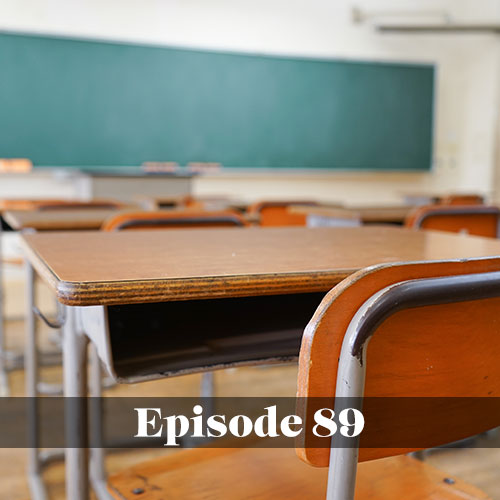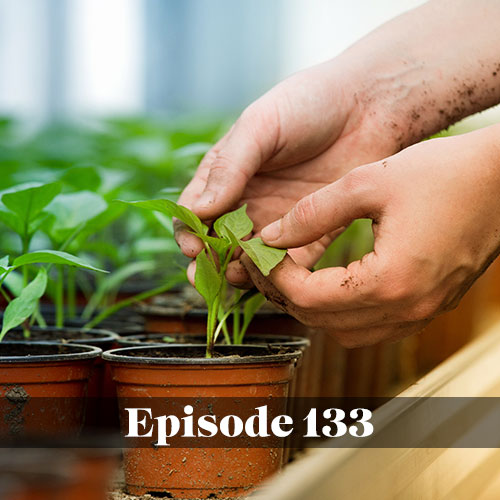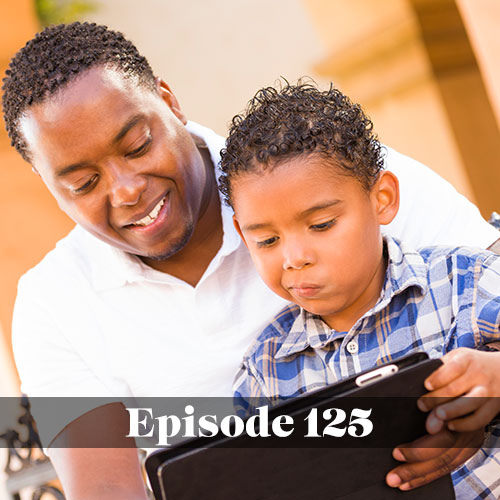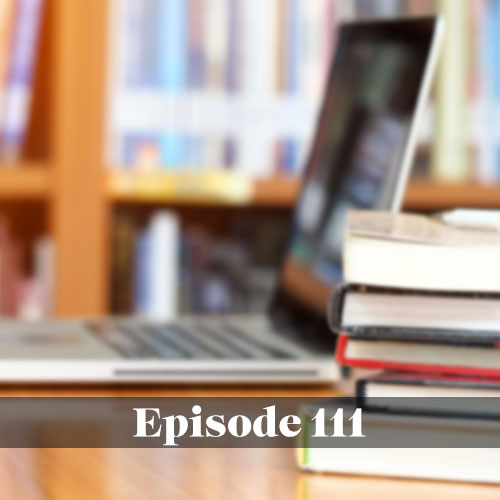Host Joel Gagne speaks with Luke Shaefer, Professor of Public Policy at the Gerald R. Ford School of Public Policy at the University of Michigan, about poverty in schools. The two discuss poverty within schools and what can be done to help children reach their full potential.
Luke says that a lot of his students have been teachers, and they said that they were exhausted because of how much they dealt with in the classroom related to poverty. He says that a recent study showed that nearly half of the kids in public schools are eligible for free or reduced-price lunches.
“One out of every two kids fits the threshold of low income,” Luke says. “I just think that teachers have a lot to deal with that’s really outside of their control.”
Joel asks Luke what we can do to help lessen the negative effects of poverty in schools.
Luke says that studies show that food insecurity spikes in the summer when students don’t have access to the free and reduced-price lunches.
“There’s an awful lot of evidence that the access to lunch and breakfast are positive benefits that can impact the kids,” Luke says.
He says that there can be stigma associated with free and reduced-cost lunches, so he thinks it’s good for schools to explore the possibilities to lessen that stigma. He says that schools can work to provide the lunches without necessarily singling the students out. He also says that schools can put thought into how they design the lunchroom to encourage better food choices.
Joel says he hadn’t thought about food placement or how much poverty in schools affects everyone, including the teachers. Joel says that the school his kids attends offers breakfast to all students, which he thinks is a smart way to reduce the stigma of free and reduced-price lunches.
Joel asks Luke what one thing superintendents could consider tackling to address poverty in schools more effectively.
“We’re in a place where people’s faith in institutions is pretty low,” Luke says. “Even though we’ve seen the decline of people’s faith in public schools, especially in disadvantaged communities that is often the singular place that people trust and will go to.”
He encourages superintendents to think about to what extent that a school can be a hub both for the students and the parents. He says that schools can help provide healthcare by forging partnerships with health providers. He says that acting as a community hub can help build trust within a community.
Luke shifts to talk about SNAP, which offers nutrition assistance to millions of low-income individuals and families. He says that a recent study shows that when the SNAP benefits run out toward the end of each month, disciplinary action tends to spike. Tests scores start to go down and hospital admissions start to go up.
Luke explains that if teachers are giving a standardized test during the best part of the SNAP benefits cycle, the students are likely to perform better on the test than if the test is at the end of the cycle.
Finally Luke explains summertime fade out. He says that while the starting point at the beginning of the year may be different, students all tend to improve throughout the year. But over the summer, higher income kids tend to stay at the same level or continue to move forward. Meanwhile lower income kids over the summer tend to fall backward.
“Higher income kids have a lot more exposure to enriching activities,” Luke says. “They’re going to camp, they’re learning all the social skills that are important to continuing to do well in school. They’re getting a lot of cognitive stimulation, and those opportunities just aren’t as apparent among low-income kids.”
Luke says that a way to mute the summertime fade out is for schools to offer more enriching summertime activities that are available to families at all income levels.
Joel agrees that summertime enrichment is incredibly important, and he shifts to discussing the book that Luke co-wrote, “$2 a Day.” Joel asks if Luke can share an example of when combatting poverty in schools ended in a true success story.
Luke says that intensively interfering at a very early age can really impact the trajectory of a child’s life. But he also wonders if just giving low-income families money would be a considerable help.
“We’ve gotta ask the question of whether or not families would simply be better off if we gave them the money that we’re spending on a program,” Luke says.
He mentions that at the University of Michigan they’ve been looking into low-income kids who are eligible to get into the university but they don’t even apply due to thinking they can’t afford it.
“We piloted something as an experiment called the HAIL Scholarship,” Luke explains. “We just sent kids basically a coupon for free tuition at the University of Michigan.”
Luke says that they simplified everything and basically told students that if they got into the school, they would make it financially feasible for them to come. The response was incredible, and in the first year they attracted 262 students.
The success of the HAIL Scholarship inspired the Go Blue Guarantee. The Go Blue Guarantee says that if a student gets into U-M and their family income is less than $65,000, the university will provide free tuition. He says that this isn’t a change in policy, but just a change in communication–and the response has been amazing.
Joel and Luke discuss the Kalamazoo Promise. Some anonymous billionaires said that if you get through Kalamazoo public schools, they’ll pay for students to go to a 4-year college in Michigan. The results showed that this improved academic performance among students. Plus, a lot of students who had been going to private schools opted into public schools once the Kalamazoo Promise was announced–which raised the revenue coming into the public schools.
“It’s easy to get bogged down by all the challenges,” Luke says. “But there are positive examples where we can change the way we do things and people really respond.”
Joel says that The Brookings Institution was pretty tough on the Kalamazoo Promise, so he asks Luke if he’s seen any big benefits from programs like this.
Luke says that his impression is that he’s seen a lot of reports that show a positive impact in high school, and while there’s not as much evidence that the kids are finishing college, it’s still overall improvement. He says it’s about figuring out what’s happening in college and how we can keep the students there.
“Even if the Go Blue Guarantee didn’t raise our completion rate, I’d still think it would be a positive policy because it intervened at one step,” Luke says.
He says that one of the things he’s working on is working with the City of Detroit to think about how you try to successfully build mixed-income neighborhoods in an authentic way.
Luke says that the key is to figure out all the critical moments in development so that we can intervene and support children.
When Joel asks what one book Luke would recommend to our listeners, he suggests “How Children Succeed.” Luke says that it’s a great book to understand how we work in the circumstances that we’re in. He also suggests “Evicted” to help understand poverty in schools and how it affects families.
Got a question or topic you’d like covered in an upcoming We Love Schools podcast? Email us at info@weloveschoolspodcast.com
First time listening to We Love Schools? Learn more about our weekly podcast.
Interested in learning more about how the Allerton Hill Communications team can help your school with communications? Contact us today.






